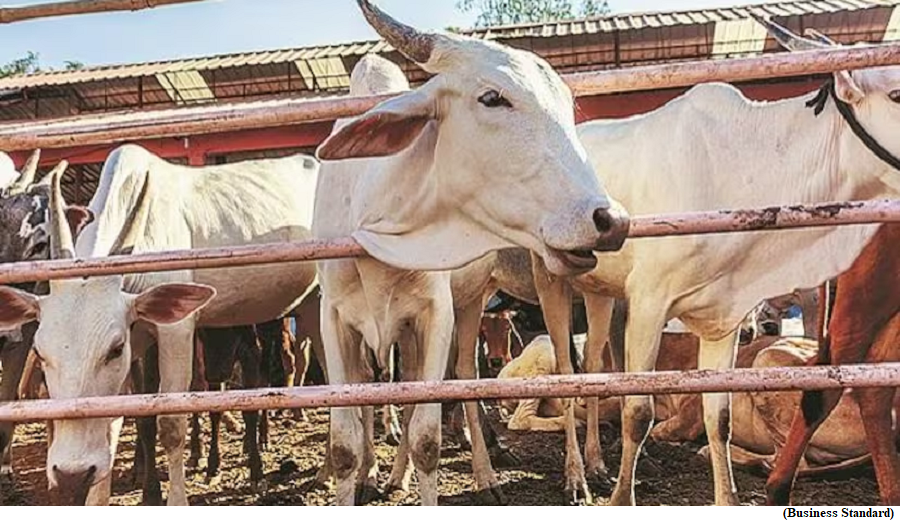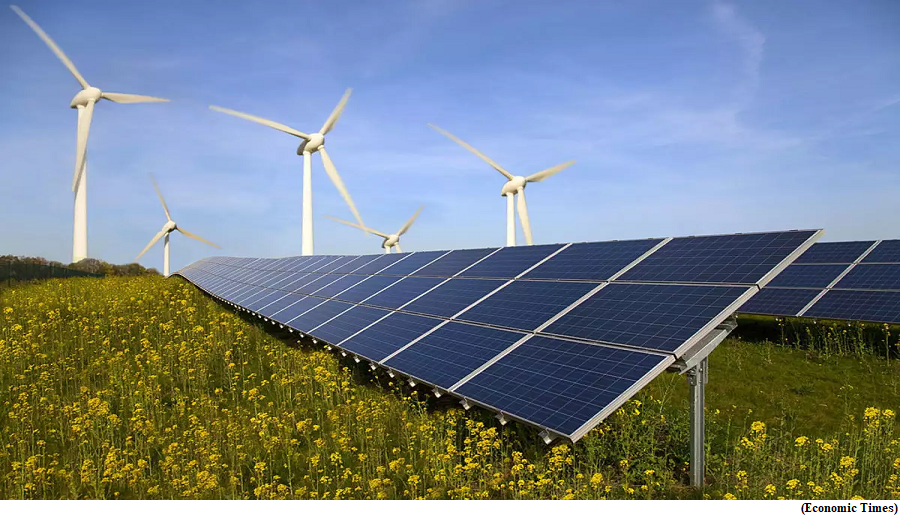Rule 176 vs Rule 267, What Govt agrees to, what Opp demands (GS Paper 3, Science and Technology)

Why in news?
- The opening day of the Monsoon Session of Parliament was disrupted after the government and the Opposition differed on the format of the discussion on the Manipur situation.
- While the government agreed for a short-duration discussion, the Opposition insisted that the Prime Minister make a suo motu statement followed by a discussion, suspending all business under Rule 267.
What is Rule 267 and Rule 176?
- According to the Rules of Procedure and Conduct of Business in the Council of States, Rule 267 relates to suspension of rules.
- It says, “Any member, may, with the consent of the Chairman, move that any rule may be suspended in its application to a motion related to the business listed before the Council of that day and if the motion is carried, the rule in question shall be suspended for the time being: Provided further that this rule shall not apply where specific provision already exists for suspension of a rule under a particular chapter of the Rules.”
Rule 176:
- Short-duration discussion, is a brief discussion not exceeding two-and-a-half hours under Rule 176.
- It says that “any member desirous of raising discussion on a matter of urgent public importance may give notice in writing to the Secretary-General specifying clearly and precisely the matter to be raised: Provided that the notice shall be accompanied by an explanatory note stating reasons for raising discussion on the matter in question: Provided further that the notice shall be supported by the signatures of at least two other members.”
- Once the Chairman admits the notice, the rules say he, in consultation with the Leader of the Council, will fix the date on which such matter may be taken up for discussion and allow such time for discussion, not exceeding two and a half hours.
- It means that a short-duration discussion under Rule 176 can be taken up immediately, a few hours later, the next day or can be fixed for a later date and time. But the rule says there shall be no formal motion or voting under a short duration discussion.
What experts say?
- Experts say opposition parties had been mistakenly using Rule 267 as an equivalent to the adjournment motion in Lok Sabha.
- In case of adjournment motion, governed by Rules 56-63 of the Rules of Procedure and Conduct of Business in Lok Sabha, the discussion is based on a motion.
- The rule defines adjournment motion as “a motion for an adjournment of the business of the House for the purpose of discussing a definite matter of urgent public importance may be made with the consent of the Speaker”.
First ever “Credit Guarantee Scheme” for Livestock Sector launched
(GS Paper 3, Economy)
Why in news?
- The Department of Animal Husbandry & Dairying, Ministry of Fishries, Animal Husbandry and Dairying is implementing the Credit Guarantee Scheme under Animal Husbandry Infrastructure Development Fund (AHIDF).

Credit Guarantee Scheme:
- It aims to strengthen credit delivery system and facilitate smooth flow of credit to the Micro, Small & Medium Enterprise (MSMEs) engaged in Livestock sector without hassles of collateral security.
- The credit guarantee scheme facilitates access to finance for un-served and under-served livestock sector, making availability of financial assistance from lenders to mainly first-generation entrepreneurs and under privileged section of society, who lack collateral security for supporting their ventures.
- The main objective of the Credit Guarantee Scheme is that the lender should give importance to project viability and secure the credit facility purely on the basis primary security of the assets financed.
Credit Guarantee fund Trust:
- For operationalizing the scheme, DAHD has established a Credit Guarantee fund Trust of Rs. 750.00 crores, which will provide credit guarantee coverage up to 25% of the credit facilities extended to the MSMEs by the eligible lending institutions.
- The establishment of credit guarantee fund trust was approved under the Prime Minister’s AtmaNirbhar Bharat Abhiyan stimulus package of Rs.15000 crores “Animal Husbandry Infrastructure Development Fund” (AHIDF) for incentivizing investments by individual entrepreneurs, private companies, MSMEs, Farmers Producers Organizations (FPOs) and Section 8 companies to establish
- the dairy processing and value addition infrastructure,
- meat processing and value addition infrastructure,
- Animal Feed Plant,
- Breed Improvement technology and Breed Multiplication Farm
- Animal Waste to Wealth Management (Agri Waste Management) and
- Setting up of Veterinary Vaccine and Drugs Manufacturing facilities.
- DAHD has formed a trust with NABSanrakshan Trustee Company Private Limited, a wholly owned subsidiary of NABARD for the establishment of a Credit Guarantee Fund Trust for extending the credit guarantee to Micro, Small & Medium Enterprises under AHIDF scheme.
- This fund trust established in March 2021 is the India’s first ever fund trust under Credit guarantee scheme of AHIDF in the agriculture and Animal Husbandry sector and is a path-breaking initiative taken by DAHD which would exponentially increase the number of MSME units getting benefits of AHIDF scheme and strengthen the ecosystem for the collateral-free credit from the banks.
- The credit guarantee portal has been developed as a rule based B2B portal and implemented the enrollment of eligible lending institutions under Credit Guarantee Scheme, issuance/renewal of Credit Guarantee Cover and Settlement of Claims.
Key Features of AHIDF scheme:
- Interest Subvention of 3%
- loan up to 90% of the total project cost from any Scheduled Bank, National Cooperative Development Corporation (NCDC).
Way Forward:
- The initiative of credit guarantee scheme taken by DAHD is expected to greatly increase the participation of MSMEs engaged in livestock sector leading to increased flow of credit to the sector and strengthen the MSMEs to boost the overall rural economy through strengthening the Livestock sector which is of one of the most potential sector seeking development.
Roadmap for Promoting Solar Energy for Universal Energy Access
(GS Paper 3, Environment)
Why in news?
- At a side-event of the 4th Energy Transition Working Group in Goa, the Ministry of New and Renewable Energy (MNRE), in association with the International Solar Alliance, released a Roadmap of Solar Energy for Universal Energy Access.
- A workshop and panel discussion were also held, where energy access issues and solutions were deliberated upon.

Universal Energy Access:
- Based on the analysis done by the International Solar Alliance in the Roadmap of Solar Energy for Universal Energy Access released,
- around 59% (396 million people) of the unelectrified population can be best suited for electrification through solar-based mini-grids,
- about 30% (203 million people) through grid extensions and
- the remaining 11% (77 million people) through Decentralized Renewable Energy solutions.
- To achieve this, a total investment of around USD 192 billion will be required, comprising: USD 97 billion in Solar-based mini-grids for approximately 25,738 MW of capacity; USD 18 billion in Solar-based decentralised renewable energy (DRE) solutions for about 1,224 MW of capacity; and USD 78 billion in Grid Extensions for the required infrastructure.
- Considering viability gap funding of 50% of project costs, financial support of around USD 48.5 billion will be needed to achieve the required mini-grid deployment.
- Through increased investments, ecosystem development initiatives, focused interventions, optimal use of resources, and solar PV-based cooking solutions integration with electrification initiatives, the world can accelerate into a fast-paced development scenario to achieve universal energy access by 2030.
Challenges & Solutions:
- The Roadmap further states that while the technology solutions necessary for achieving energy access are available, several challenges must be addressed to sustainably scale up the deployment of these solutions. While countries widely recognize the necessity for policies and regulations, progress in this area still needs to be made.
- As a result, private sector participants and local entrepreneurs are hesitant to engage in energy access projects.
- Intergovernmental organisations can play an instrumental role here by assisting access-deficit countries in developing policy and regulatory frameworks that create an enabling environment for interventions.
- Most of the population facing energy access deficit resides in underdeveloped regions where consumers struggle to afford electricity.
- High financial risks in these regions increase project costs for developers, widening the gap between consumer affordability and supplier viability. Risk mitigation measures and concessional financing can attract private-sector investment to energy access projects, facilitating scalability and sustainability.
Skill development:
- Another aspect predominant in energy access-deficit countries is often the need for more technical and financial expertise to drive electrification initiatives.
- They require skill development activities, access to global best practices, and programmes to support sectoral entrepreneurs. Training and capacity building, entrepreneurial support, and awareness creation in energy access-deficit countries are vital for long-term progress.
- By increasing investments, fostering ecosystem development initiatives, implementing focused interventions, making optimal use of resources, and integrating solar PV-based cooking solutions with electrification initiatives, the world can accelerate into a fast-paced development scenario, ultimately achieving universal energy access by 2030.
About International Solar Alliance:
- The International Solar Alliance is an international organisation with 116 Member and Signatory countries. It works with governments to ease solar deployment and promote solar power as a sustainable transition to a carbon-neutral future.
- ISA’s mission is to unlock US$ 1 trillion of investments in solar by 2030 while reducing technology and its financing costs. It promotes the use of solar energy in the agriculture, health, transport, and power generation sectors.
- ISA Member Countries are driving change by enacting policies and regulations, sharing best practices, agreeing on common standards, and mobilising investments.
- Through this work,
- ISA has identified and designed and tested new business models for solar projects;
- supported governments to make their energy legislation and policies solar-friendly through Ease of Doing Solar analytics and advisory;
- pooled demand for solar technology from different countries; and drove down costs;
- improved access to finance by reducing the risks and making the sector more attractive to private investment;
- increased access to solar training, data and insights for solar engineers and energy policymakers.
- ISA is one of the first international intergovernmental organisations headquartered in India.
- It is partnering with multilateral development banks (MDBs), development financial institutions (DFIs), private and public sector organisations, civil society, and other international institutions to deploy cost-effective and transformational solutions through solar energy, especially in the Least Developed Countries (LDCs) and the Small Island Developing States (SIDS).




